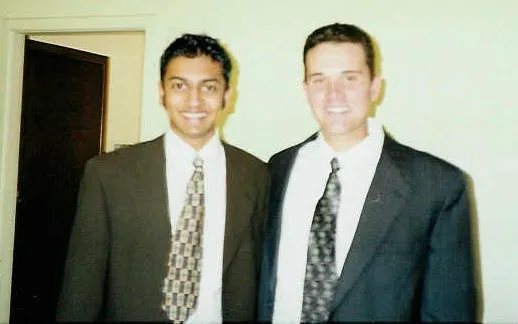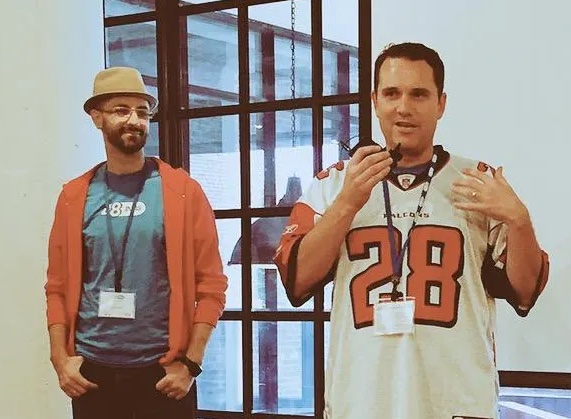The truth about the broken relationship between advertising agencies and clients
Yesterday I was on a panel at an AMA (American Marketing Association) event with Del Ross, Mike Racic, and Rick Radermacher, moderated by the great Glen Caruso. The topic was (and I’m paraphrasing), “Why is the advertising agency and client relationship so screwed up?!”. At least that’s what I would have called it.
Having been in the agency world for 15 years (started my first agency building websites for companies in 1998, sold that in 2008 and stayed with the new agency, Engauge, until last August when I left and started Dragon Army), I had a lot to say about what is wrong with the relationship between these two parties. Unfortunately its a panel so I didn’t get a lot of time to air my grievances, so I thought I’d finish my thoughts here.
What’s wrong with the advertising agency and client relationship?
– The pitch process is abysmal for everyone.
If you aren’t aware, typically agencies “pitch” business (meaning they compete to win a client’s account) constantly, hoping for a 1/3 win ratio. The process usually starts with between 10 and 20 agencies that have to create a comprehensive proposal to be submitted to the client. The client then whittles down the list to around 3-6 agencies that then come to present. This process usually takes 3-4 months from start to finish and agencies can spend upwards of $100,000 in resources and expenses during this process. Meanwhile, the client has to spend an enormous amount of time coordinating this process, reviewing the proposals and presentations and meeting to make decisions. And the reality is that in most cases, the people on the agency side doing most of the work aren’t even the people the client will end up working with. So the entire process is a bit of a joke – everyone knows it – and its a terrible way to start a relationship.
– Neither party is honest with the other.
“Hey agency, can you do this type of service and that type of service for me, or do I need to get a separate agency to do those things for me?” “What, are you kidding? OF COURSE, we can do those things!” Right. What agency is going to give money to another competitor that they can easily receive if they just say, “sure, of course we can do that!”?
“Hey client, you would tell us if we were about to lose your business, right?” “What, are you kidding? OF COURSE we would tell you if we were meeting with a bunch of other agencies behind your back and we’re about to replace you!” Right. No client wants a dejected agency to be working on their business, moving their best people off to work on clients that are going to stick with them.
I could go on, but needless to say there is very little honesty between these two parties. Even though they go out and have drinks together all the time.
– Both clients and agencies want the impossible.
Clients want specialists in every area of marketing – broadcast, digital, social, mobile, etc. – and why wouldn’t they? The problem is, they also don’t want to spend all their time managing a dozen agencies so they also would like all of those services to be held by one agency. That’s impossible. Agencies can be broad and generalists or they can be small and focused. They can’t be both.
Agencies want a client to hire them for EVERYTHING, even though the can only do about half of that. And they want so badly to be the “strategic” agency yet 90% of their revenue won’t come from strategy, so what they really want is the production, buying and execution side of the account. So even internally agencies struggle with what they want from a client.
– Neither side can keep up with consumers on the technology side and its hurting their relationship.
Consumers are using new technology and media constantly. And by the time a client can react, its too late, as the consumer has moved on to some other kind of InstaFaceSnapNibblrBook app. So they ask agencies to keep up with all that and bring them new ideas. Only clients aren’t able to pull the trigger because of one or more of these reason:
- They are scared they will lose their jobs if it fails.
- Their upper management still calls it Twittering and wouldn’t know a Snapchat if it slapped them in the face.
- They don’t have the budget to try new things (they never did).
- They don’t believe the agency knows what they’re talking about (and they might not).
– Clients want the very best people on their business, only they don’t want to pay for them. And the agency has about 4 “very best people” in total.
Of course clients want to have the all-stars on their accounts. But they don’t want to pay the dollars required to have those people and are always trying to get more for less from their agency. Meanwhile, the pool of all-stars in the agency industry is small and if I had to guess, for every 100 people at an agency only a handful are all-stars, so there clearly aren’t enough of these people to go around. Instead, clients will get a cursory look once in a while from one of these all-stars and the all-stars are overwhelmed and over-worked in an attempt to keep up with all the demands on their time.
I could go on, but those are some of the big points. I’m not sure how to unravel this thing, but I’m sure it will get better over time. It has to, because at the moment it only seems to be getting worse.
PS – Someone in the crowd yesterday insinuated that we all hated agencies. I don’t hate agencies, not at all! I just think they’re broken and in need of a major make-over. And I’m a BIG fan of agencies that are being formed to try to rethink what it means to be an agency, like Sandbox. I’m going to be a big cheerleader for Sandbox because I think its going to take new agencies and new thinking of on the client side to right the ship.




Killer post and I totally agree. My tenure of running a digital agency for 12 years definitely showed me that the process was broken, but there are many things we did that fixed allot of the common issues. The pitch is broken and believe it or not, we only pitched, meaning spend over $10,000 before the engagement two times. To think about it, on all the other engagements, we hardly ever spent over $1000. What I realized it that we needed to change the conversation and backwards sell. Backwards selling is starting at the finish line of the client’s end goal and selling them the business benefit. Check out the post for more detail, since I don’t know how much text I can type on this post:) (https://jasonswenk.com/backwards-selling-converts-sales-find/) We also had a qualification process that the client needed to meet, and if they didn’t meet it, we turned the business down.
One other thing we did was build the proposal with the client verses go through an RFP process. There are only two winners of every RFP! The winner and the first one out! Our time drafting proposals was no more than 30 minutes long at the max and we landed clients like Legal Zoom, Hitachi and Reebok.
The last thing that is broken is the agency of record. This is the biggest piece of crap in view point. You celebrate getting chosen, but you do not realize that the hardest work is ahead of you. If you truly do a great job each and every time, the client will keep coming back. Just my two cents. Great post Jeff and if anybody wants to hear more advice on the agency model or my rants, you can go to https://jasonswenk.com
Jeff, great, honest post. Almost everything about this mirrors what I saw in the world of management consulting as well. They do the dog and pony show for proposals, a few finalists are picked for presentations, and then the client picks the firm they already had the deepest relationships with. There are a few all-stars that are well known within a given firm and they get spread so thin that their head spins. Headshots get put on proposals for street cred while the team that’s actually staffed varies widely from the well known faces on the proposal. Interesting stuff, thanks for pulling back the curtain.
The truth hurts…
“There are only two winners of every RFP! The winner and the first one out!” – truer words have never been said!
Great point, I’d say 9/10 times the client picks an agency they have a relationship with. That was one of our criteria for pitching. If we didn’t have a relationship in some way, we rarely went after the business. At least when we were being smart (and not desperate).
Excellent post. Thank you for having the guts to be honest.
Nice post Jeff, very honest post.
Jeff — I have used the following two simple questions to better understand the “relationship” between the client and the current agency:
(A) Who’s your current provider?
(B) Why are you looking to switch?
The answers help me understand who’s working on the business and what baggage I’ll inherit if I win the business.